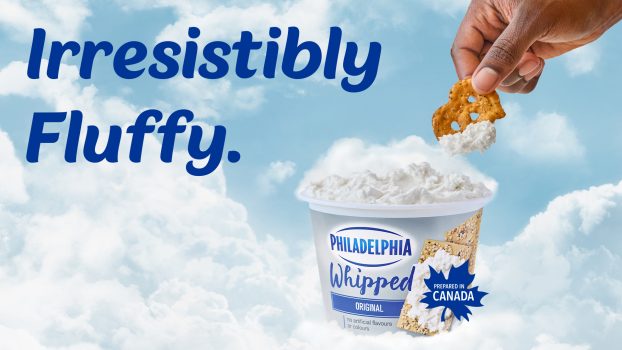Nassau: A Canadian-made promotion that has linked store owners and the operators of hotels and attractions across The Bahamas – and is credited with boosting Canadian sales to The Bahamas by as much as 24% in one promotional period – is now being used to help lure tourists from Europe and the u.s.
Called The Bahamas Treasure Card, the promotion has come about through the close co-operation of big and small merchants on the islands, the Bahamian government, Canadian tour operators, retailers, and a Toronto-based ad agency, Kaufman Advertising.
Launched in 1987, initially to help increase sales during the traditionally slow September-to-November period, the Treasure Card program is now offered in the u.s. and Europe, and is also available to tourists as they enter the Bahamas.
Basically, the promotion is modelled after a credit card system.
Tourists receive a plastic credit card titled ‘Bahamas Treasure Card,’ which gives them discount privileges at participating businesses across the islands.
Merchants, in turn, are required to offer at least 10% discounts – and some provide as much as 50% savings – on products and services of their choice.
The program comes with p-o-p, integrated radio, newspaper and outdoor advertising support and a high-quality four-color brochure that acts as a catalogue to the on-island discounts and, with about 200 merchants now involved, also serves as a kind of guide book to the many things to see and do in the Bahamas.
‘The appeal [of the Treasure Card program] is in the fact that it offers value more than just price,’ says Christine Anderson, national manager of The Bahamas Tourist Office in Toronto. ‘It is real value for money.
‘The Bahamas is still a mass-market destination,’ Anderson says. ‘There is something for everyone, whether you’re a golfer, a gambler, a general sports enthusiast, even an eco-tourist.
‘There is a multiplicity of offerings, and the Treasure Card helped tie this together,’ she says.
Not only is the concept consistent with the Bahamas’ positioning as ‘the total vacation experience,’ but the brochure and other print support material suggests all this activity can be experienced easily and efficiently.
This informational aspect of the program – reinforcing the notion of diversity in an accessible package – is increasingly important as more people take more holidays, but for shorter periods of time.
Anderson says the most popular holiday from Toronto-based tourists to the Bahamas is a three-day stop-over from Thursday to Sunday. This is followed by a seven-day stay and a four-day stay.
She says this is partly due to the increasing tendency among consumers to plan more holidays last-minute, and also because it is more realistic, given the economy, to get away for three days with an outlay of about $350, than to wait and save $2,000 for a two-week stay.
The impetus behind the Treasure Card program goes back to 1986, at a time when other sun-and-sand destinations, such as Venezuela, the Dominican Republic and Mexico began marketing themselves aggressively to Canadian tour operators, says Stewart MacPhee, president of Kaufman Advertising.
(At that time, the Bahamas’ account in Canada was handled by PIR Communications, a Canadian-owned pr and advertising agency.
(The company has since changed ownership and the advertising agency is known as Kaufman Advertising.
(The pr for the Bahamas account is handled by Kaufman’s sister company Continental PIR.)
MacPhee says tour operators – who in Canada package about 90% of southern destination travel – began viewing the new southern destinations as a better financial risk than established southern destinations such asthe Bahamas.
His challenge was to find a way of restoring tour operators’ confidence.
The agency recommended moving away from traditional image-building advertising in favor of a tactical platform built around some kind of value-added proposition.
‘The [Treasure Card] idea started with the notion of some kind of couponing system,’ MacPhee says. ‘But then we thought that the credit card would give more of an image of value. It’s tactile, it conjurs up images of money transfer.
‘We also decided against using a lighter-weight plastic, and chose the same rigid plastic that you associate with high-end credit cards, again, to emphasize the impression of quality,’ he says.
Stuart Medd, vice-president of marketing and sales for Toronto-based Alba Tours, gives full marks to the Bahamas for the Treasure Card program.
‘We believe that anything that a destination can do to add value, given today’s consumer, is good. It’s as simple as that,’ Medd says.
‘Consumers are looking for as much as they can get for their dollars,’ he says.
Medd, whose tour company is within the top 10 in Canada, moving about 80,000 passengers annually, says the retail trade likes the promotion because it is a proven, workable program.
‘It works, and it’s one of the few [promotions of its kind] that involves the co-operation of government and the private sector,’ he says. ‘They are working together effectively, and that’s a large part of its success.’
In fact, the biggest hurdle the Treasure Card promotion faced in its formative stages was getting island merchants to buy into the program’s long-term objectives, according to Vernice Walkine, deputy general manager of marketing for the Bahamas Ministry of Tourism in Nassau.
‘It was a radical idea, interesting but also rather scary,’ Walkine says.
‘We had a conviction that it could work, but we also knew it would require a concerted effort on our part,’ she says.
‘We kept going back to the merchants and said: `We – you – need to bring more business to the islands.’
‘Some of them had difficulty understanding the benefits, particularly those merchants who are selling high-quality products.’
The program began – under the name Bahamas Discovery Card – with about 50 merchants signed up, mostly in Nassau and Freeport.
The first year’s results were positive.
Bahamas’ share of Canadian traffic to Caribbean destinations, which had dropped six percentage points the previous year, showed a reversal.
During the fall 1987 promotion period, stopover traffic from Canada increased 23.9% over the previous year.
And while they could not pinpoint increases specifically to the card program, merchants reported sales were up.
‘Anything that will bring people to my establishment is obviously going to make me happy,’ says Joan Hanna, a Winnipeg native who owns and runs a restaurant just outside of Nassau
‘In this case[Treasure Card], I liked the way it was packaged – it looks very good and professional – and it’s been consistent,’ Hanna says. ‘I think that’s very important.’
After the fall 1987 launch, advertising support was added in the Canadian market to give the program more visibility and to push the call to action.
Stopovers from Canada have increased each year during the promotional period and now the Ministry of Tourism is considering maintaining the program on a permanent basis.
It is estimated that about 110,000 Canadians, mostly from Ontario and Quebec, will stop over in the Bahamas in 1992. This compares with about 72,000 in 1986.
These figures do not include those Canadians who may visit the Bahamas as part of a cruise. Overall cruise visitors account for about 55% of the tourists on the islands.
‘When there are so many destinations competing for the same core group of people, you need to be proactive,’ says Walkine. ‘You can’t just assume that what was acceptable to them last year will be acceptable this year.
‘A promotion like this gives the consumer the perception that they’re getting more for their money,’ she says.
Walkine credits a large part of the card program’s success in Canada to what she describes as a unique synergy involving the Canadian Bahamas Tourist Office, tour operators, the retail trade and Bahamas’ communications agencies.
‘I would want to duplicate the Canadian experience everywhere, the way advertising works with pr, with the Canadian Tourist Office and tour operators,’ she says.






















